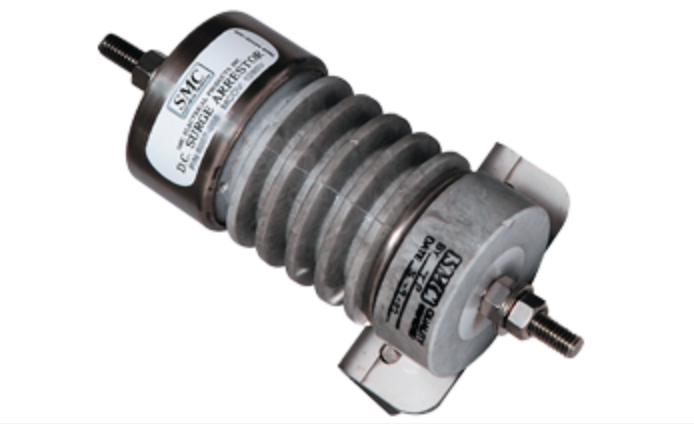 In contrast to the traditional current-limiting resistive air gaps, Metal Oxide Surge Arrestors (MSA) are devices designed to break up and absorb a high energy surge event and protect downstream equipment from damage.
In contrast to the traditional current-limiting resistive air gaps, Metal Oxide Surge Arrestors (MSA) are devices designed to break up and absorb a high energy surge event and protect downstream equipment from damage.
The function of an MSA is to absorb surges of high energy, thereby minimizing the amount of energy that is allowed to reach the downstream equipment. The structure comprises a metal oxide body and an internal gap, generally between 1 to 3 mm in width and 3-5 mm in length when the device is fired. A surge will cause a pressure rise in this gap area, causing the device to fire.
When a surge hits an MSA, the high current flow through the device causes the internal gap to break down. The gap breaks down into two steps:
- The high energy of the surge charge induces a large temperature rise at the end of the gap. The large temperature rise at this point creates enormous stress and pressure inside the device. To relieve this internal pressure and cause it to be more equalized on both sides of the device, it will fracture at this point. This fracture point is commonly referred to as the "detonation point".
- The second breakdown is the result of the creation of silica and alumina from the high melting point metal oxide. This causes additional pressure inside the device that causes it to fracture at a second location, creating a third gap. The wide gap breakdown process creates multiple gaps in series and results in an MSA firing which causes it to dissipate most of the surge energy.
The surge dissipation properties of MSA's are higher than other non-firing surge protective devices, such as gas tubes or varistors. All these components typically have surge energy dissipation in the range of 1-15 joules per kilowatt. The highest energy absorption capability of an MSA is approximately 20 to 25 joules per kilowatt. This is two to five times better than a non-firing surge arrestor.
Metal oxide surge arrestors are typically used in medium and high-power semiconductors and equipment such as servers to connect through a metal or metal oxide heat sink. With proper energy absorption capability and low cost, ceramic insulators at their base can offer a significant benefit by reducing the amount of heat generated by the unit, which becomes an issue in high power applications.
SWARTZ ENGINEERING as an MSA manufacturer does have its challenges. The overall operational costs are higher for these devices than a traditional metal oxide barrier and other non-firing surge protectors since the technology is more expensive.
In addition to other industry safety products, SWARTZ ENGINEERING offers MSA's used in low voltage applications where it is not necessary to break down the surge arrestor. Contact us to learn more about metal oxide surge arrestors now.
